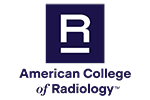Headache—Child
Although headache is common in children of all ages, imaging tests are rarely needed and most often do not reveal an underlying cause. Primary headache, a headache not due to an underlying condition, can happen at any age and is typically caused by tension or migraine. Imaging tests are not needed in children with primary headache. Secondary headache, a headache due to an underlying condition, is more common in younger children. The decision to have a brain imaging test to find the cause of secondary headache should be decided by the pediatrician after reviewing the child’s medical history and a physical examination.
When the child’s pediatrician decides imaging is needed, MRI of the brain, and possibly the neck, without contrast is the most appropriate initial test. MRI is the best imaging test to look at the brain tissue for structural abnormalities or when the child had a prior incident of head trauma. CT of the brain may be the best initial imaging for sudden severe (thunderclap) headache, if bleeding in the brain is suspected, in headache due to acute trauma, or in an emergency setting when MRI is not available. Both MRI and CT may be used to look at the arteries (angiography) or veins (venography) in the brain and neck; intravenous contrast may need to be used. Intravenous contrast is used when there is infection or tumor and may be needed when other abnormalities are found.
For more information, see the Headache page.
This page was reviewed on December 15, 2021


